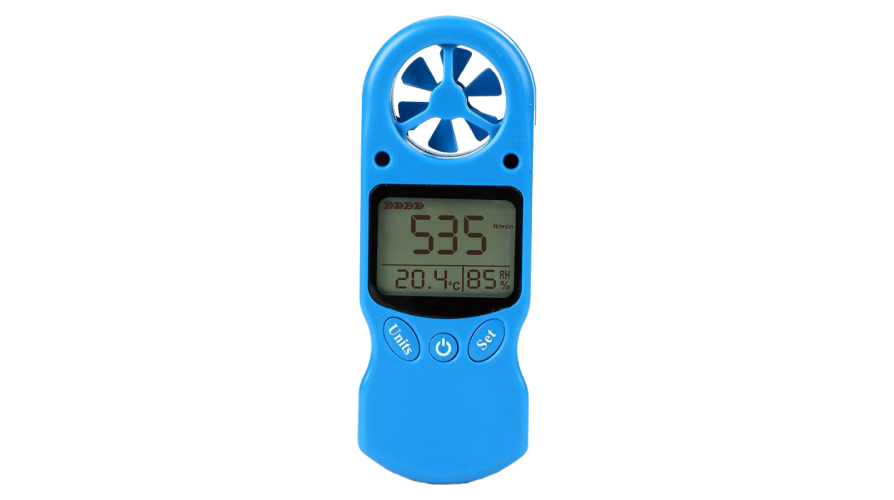Contrasting Digital and Mechanical Anemometers: Which is Right for You?
Contrasting Digital and Mechanical Anemometers: Which is Right for You?
Blog Article
Checking Out the Features and Benefits of Anemometers for Climate Lovers and Professionals
Anemometers stand as important devices in the world of weather tracking, dealing with both fanatics and skilled experts alike. These devices provide a home window into the vibrant globe of wind patterns and speeds, supplying invaluable data for meteorological evaluation and forecasting. From mug anemometers to sonic anemometers, each type brings its special set of applications and advantages, clarifying various facets of atmospheric conditions. As we dive right into the features and benefits of anemometers, a much deeper understanding emerges not just of prevailing climate sensations but additionally of the wider implications for fields like wind energy manufacturing and ecological research.
Significance of Anemometers in Weather Condition Monitoring
Anemometers play an important duty in weather condition tracking by giving exact measurements of wind speed, aiding in forecasting and understanding climate patterns. These tools, varying from traditional cup anemometers to contemporary ultrasonic anemometers, are essential for meteorologists, scientists, and climate fanatics alike.

Types of Anemometers and Their Applications
The most common kinds of anemometers include mug anemometers, vane anemometers, hot-wire anemometers, and ultrasonic anemometers. Cup anemometers are composed of three or 4 cups placed on horizontal arms that revolve with the wind, determining its rate. Vane anemometers, on the other hand, utilize an easily rotating vane to straighten with the wind direction, supplying both wind rate and instructions measurements.
Each sort of anemometer has its distinct benefits and applications. Cup anemometers are durable and suitable for general climate monitoring, while vane anemometers are favored for directional dimensions. Hot-wire anemometers are delicate to low air rates, making them perfect for interior environments. Ultrasonic anemometers are non-intrusive and provide high precision, usually used in research study and specialized weather tracking applications. Recognizing the characteristics and applications of each type of anemometer is vital for selecting the most ideal tool for particular weather condition monitoring needs.
Benefits of Making Use Of Anemometers in Projecting
In meteorology, the use of anemometers uses invaluable benefits for improving the accuracy of weather forecasting. Anemometers measure wind rate and instructions, providing essential data for forecasting climate patterns. By integrating wind data into projecting versions, meteorologists can much better recognize the motion of weather condition systems, anticipate adjustments in weather, and issue a lot more accurate forecasts.
Furthermore, anemometers play an important function in examining prospective weather threats. Checking wind rates assists forecasters predict extreme weather condition events such as storms, twisters, and winter months storms with better accuracy. This very early warning system enables authorities to provide timely signals and execute essential precaution, lowering the dangers to life and home.
Additionally, anemometers assist in maximizing renewable power production. By examining wind patterns, meteorologists can identify appropriate areas for wind ranches and predict power result, adding to the reliable generation of wind power.

Anemometers in Wind Power Manufacturing
Offered the essential role anemometers play in supplying exact wind information for weather forecasting and risk evaluation, their importance includes the world of wind power manufacturing. Anemometers are important instruments in the field of wind energy, where the dimension of wind speed and direction is essential for figuring out the usefulness and performance of wind generator installments. By properly gauging wind speeds at varying heights, anemometers assist enhance the positioning and style of wind generators to optimize power outcome.
In wind ranches, anemometers are tactically put to accumulate real-time wind information that is used to evaluate the prospective energy production of a site. This information is instrumental in determining the financial viability of wind power projects and in forecasting energy generation to ensure grid stability. In addition, anemometers help in monitoring wind problems to maximize wind turbine performance, protect against damages from high winds, and make sure the safety and security of workers functioning in the location of wind turbines.
Enhancing Weather Condition Comprehending With Anemometers

Anemometers play a vital duty in enhancing our understanding of microclimates. These local climate condition can differ substantially from more comprehensive regional forecasts, making it necessary to have exact data for details areas. anemometer. By tactically placing anemometers in various areas, researchers can collect thorough info on exactly how wind behaves in various surfaces, city settings, or bodies of water
Additionally, anemometers add to enhancing weather forecasting versions by supplying real-time data on wind behavior. This details is especially useful for forecasting severe weather condition events, maximizing farming practices, and sustaining sectors like air travel and maritime navigating. On why not look here the whole, anemometers are important tools that allow us to delve deeper into the complexities of climate systems, eventually resulting in even more better-informed decisions and exact predictions.
Verdict
In conclusion, anemometers play an important duty in climate surveillance and projecting by gauging wind speed and direction. Anemometers likewise have applications in wind energy production, additional highlighting their relevance in both meteorology and renewable power fields.
From mug anemometers to sonic anemometers, each type brings its one-of-a-kind collection of applications and advantages, shedding light on various facets of climatic conditions. These tools, ranging from traditional helpful hints cup anemometers to modern ultrasonic anemometers, are necessary for meteorologists, scientists, and climate fanatics alike. The most usual kinds of anemometers consist of mug anemometers, vane anemometers, hot-wire anemometers, and ultrasonic anemometers. Mug anemometers are durable and ideal for basic climate surveillance, while vane anemometers are preferred for directional dimensions. Anemometers are crucial tools in the area of wind power, where the measurement of wind speed and direction is important for establishing the usefulness and performance of wind turbine setups.
Report this page